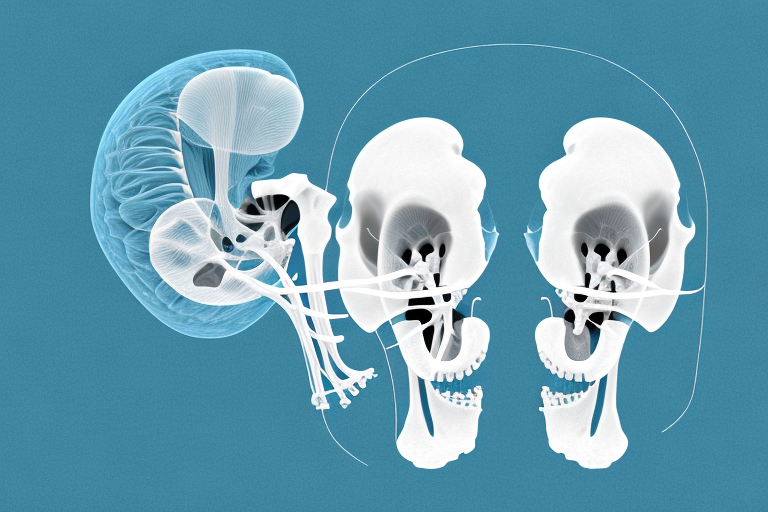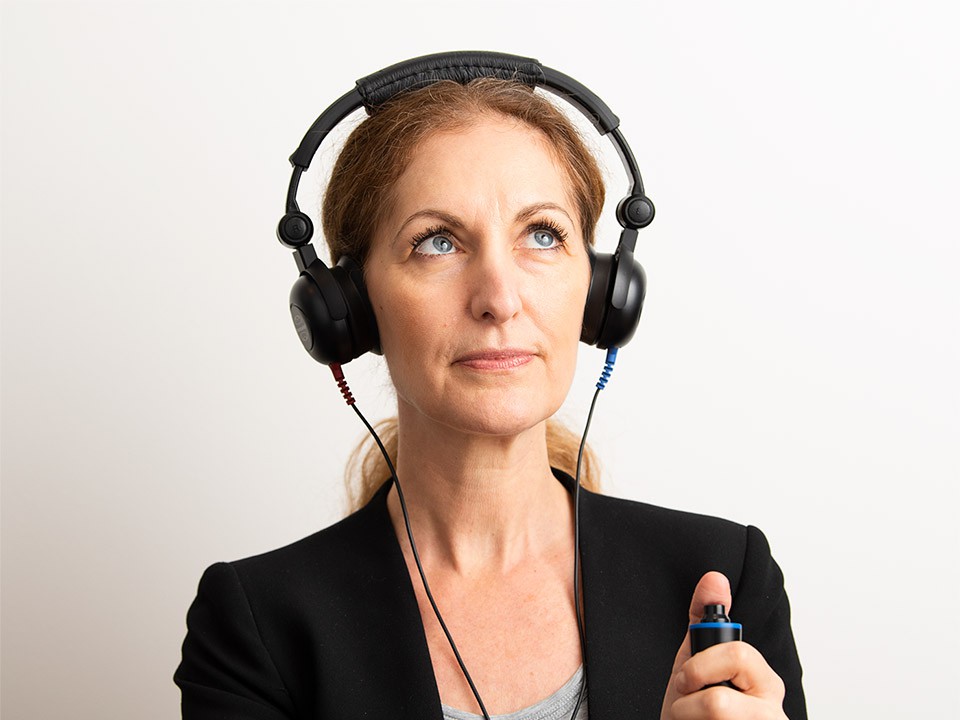Otosclerosis: Symptoms, Causes and Treatment

Otosclerosis is a condition that affects the bones of the middle ear, leading to hearing loss. In this article, we will discuss otosclerosis in detail, outlining its symptoms, causes, and treatment options.
What is Otosclerosis?
Otosclerosis is a disorder that occurs due to the abnormal growth of bone tissue in the middle ear. This growth leads to the immobilization of the stapes bone, reducing its ability to transmit sound vibrations to the inner ear. This lack of transmission of sound waves can lead to varying degrees of hearing loss in one or both ears.
Otosclerosis is a relatively common condition. It typically develops in young adults between the ages of 15 and 45, and is more common in women than in men. While the exact cause of otosclerosis is unknown, it is believed to be hereditary in nature, with a family history of the condition increasing the likelihood of developing it.
Understanding the Anatomy of the Ear
Before delving into the causes and treatment options for otosclerosis, it is essential to have a brief understanding of the anatomy of the ear.
The ear is composed of three parts – the outer ear, the middle ear, and the inner ear. The outer ear consists of the pinna (the external part of the ear) and the ear canal. The middle ear comprises the eardrum and the three tiny bones – the malleus, incus, and stapes – which help to amplify sound vibrations. The inner ear contains the cochlea (a snail-shaped structure responsible for hearing) and the vestibular system, which helps to maintain balance.
It is important to note that each part of the ear plays a crucial role in the hearing process. The outer ear collects sound waves and directs them towards the eardrum, which vibrates in response. These vibrations are then transmitted through the middle ear bones and into the cochlea, where they are converted into electrical signals that the brain can interpret as sound. The vestibular system, on the other hand, helps us to maintain our balance and spatial orientation.
How Common is Otosclerosis?
Otosclerosis affects about 1% of the population, and it usually occurs in people aged between 15 to 45 years. It affects women twice as often as men, and it is more common in Caucasians than in other ethnicities.
While the exact cause of otosclerosis is unknown, it is believed to be a combination of genetic and environmental factors. Some studies have suggested that certain viruses may play a role in the development of otosclerosis. Additionally, individuals who have a family history of the condition are at a higher risk of developing it themselves.
Different Types of Otosclerosis
Otosclerosis can be classified into two types – fenestral and retrofenestral. Fenestral otosclerosis affects the stapes and the oval window of the inner ear, while retrofenestral otosclerosis affects the bone behind the cochlea.
It is important to note that otosclerosis can also be categorized based on its severity. Mild cases may not require treatment, while severe cases may require surgery. Additionally, otosclerosis can sometimes be accompanied by other hearing conditions, such as tinnitus or sensorineural hearing loss. It is important to consult with a healthcare professional if you suspect you may have otosclerosis or any other hearing-related issues.
The Role of Genetics in Otosclerosis
The exact cause of otosclerosis is unknown, but it has been linked to genetic factors. Researchers have found that a family history of the condition increases the risk of developing it.
Studies have also shown that certain genes may be involved in the development of otosclerosis. One gene in particular, called TGBF1, has been found to be associated with the condition. This gene is involved in the production of a protein that helps regulate bone growth and remodeling. Mutations in this gene may lead to abnormal bone growth in the middle ear, which can cause hearing loss.
Risk Factors for Developing Otosclerosis
Other factors that increase the likelihood of developing otosclerosis include:
- Pregnancy
- Measles infection
- Repeated exposure to loud noise
- Low levels of fluoride in the body
- Autoimmune disorders
Recent studies have also shown a correlation between smoking and an increased risk of developing otosclerosis. Smoking can lead to a decrease in blood flow to the inner ear, which can cause damage to the delicate structures involved in hearing. Additionally, smoking can also lead to a decrease in bone density, which may contribute to the development of otosclerosis.
Otosclerosis Diagnosis
Otosclerosis is diagnosed through a series of tests and procedures, including:
- Hearing tests
- Physical examination of the ear
- Imaging tests such as CT scans or MRI scans
In addition to these tests, a doctor may also perform a stapedial reflex test to diagnose otosclerosis. This test measures the reflex of a muscle in the middle ear in response to a loud sound. If the reflex is absent or delayed, it may indicate otosclerosis. A doctor may also perform a tuning fork test to determine if the hearing loss is conductive or sensorineural. Conductive hearing loss is often associated with otosclerosis.
What are the symptoms of Otosclerosis?
The most common symptom of otosclerosis is hearing loss, which can range from mild to severe. Other signs and symptoms of the condition include:
- Ringing in the ears (tinnitus)
- Dizziness or vertigo
- Difficulty hearing in noisy environments
- Gradual hearing loss over time
In addition to the above symptoms, some people with otosclerosis may experience a sensation of pressure or fullness in the ear. This can be accompanied by pain or discomfort. It is important to note that not everyone with otosclerosis will experience all of these symptoms, and some may have no symptoms at all. If you are experiencing any of these symptoms, it is important to see a healthcare professional for an evaluation and proper diagnosis.
When to speak to your doctor
Otosclerosis is a condition that can cause significant hearing loss in affected individuals. While the exact cause of the condition is unknown, there are several treatment options available to manage hearing loss resulting from otosclerosis. Seeking prompt medical attention and following the aftercare instructions provided by healthcare providers are crucial factors in ensuring successful treatment outcomes.
Otosclerosis Treatment
Non-Surgical Treatments for Otosclerosis
Medical therapy involves the use of hearing aids or bone-anchored hearing aids (BAHA) to amplify sound for those with mild to moderate hearing loss.
Surgical Procedures for Treating Otosclerosis
Surgical intervention is an option for those with more severe hearing loss. There are two surgical procedures that can treat otosclerosis – stapedotomy and stapedectomy. Both procedures involve the removal or replacement of the stapes bone to restore hearing.
Recovery and Aftercare for Otosclerosis Patients
Patients who undergo surgical treatment for otosclerosis require a post-operative recovery period to ensure that the ear heals correctly. Recovery usually lasts several weeks and may involve complete bed rest for a few days.
Coping with Hearing Loss Due to Otosclerosis
Coping with hearing loss due to otosclerosis can be challenging, and it may require a supportive network and lifestyle changes. There are several support groups available for people with hearing loss that can provide emotional support and practical advice.
Prevention and Management Strategies for Otosclerosis
There are no known ways to prevent otosclerosis, but certain measures can reduce the risk of hearing loss. These include protecting your ears from loud noise, maintaining a healthy diet, and seeking prompt medical attention if you experience any hearing problems.
Hidden Hearing is Northern Ireland’s leading private provider of hearing care solutions, and our national network includes over 15 clinics. We have an excellent variety of hearing aids, including small and highly sensitive models that are invisible to other people, and you can try these when you visit your clinic.


